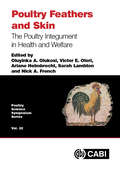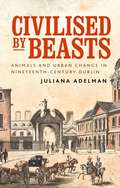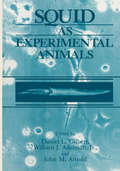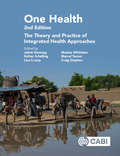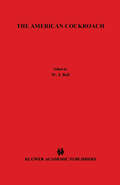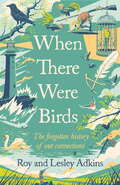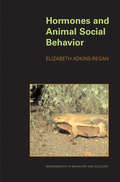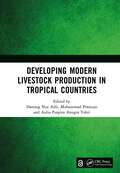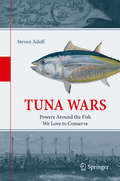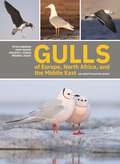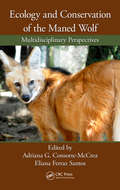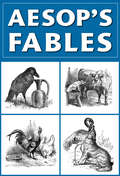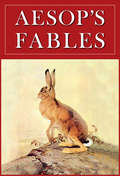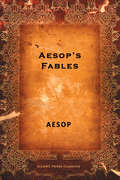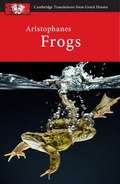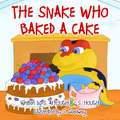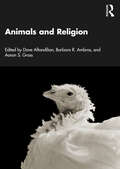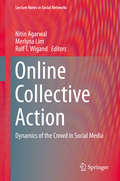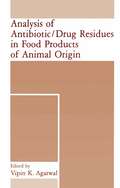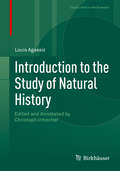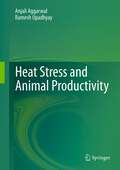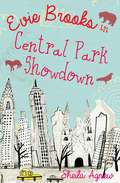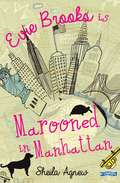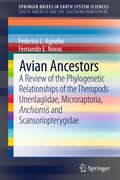- Table View
- List View
Poultry Feathers and Skin: The Poultry Integument in Health and Welfare
by Sunday A. Adedokun Piter Bijma Avigdor Cahaner Esther D. Ellen Rick A. Emous Denis Headon Paul Hocking Dagmar Kappel Marinus M Krimpen Theagarten Lingham-Soliar Steve Lister Paul F McMullin Christine Nicol Thea van Niekerk Opeyemi C Olojede Dr Victor Olori Otto A Tuijl Teun VeldkampThe feathers and skin in birds are the first line of defence, but are also important in helping the bird to maintain a stable internal temperature, facilitate integral mobility and ensure successful mating in some species. For poultry, the physical conditions of feathers and skin are important barometers to assess the impact of management and ensure health and welfare. Based on the proceedings of a recent symposium, this book documents the significant developments that have been made in our understanding of the importance of the integument to poultry species. The book: . Traces the development of the integument over time and discusses our current understanding of its embryonic development. . Includes a broad range of studies covering genetics, welfare, health, nutrition, and management. . Promotes research opportunities in an under-studied field. Providing a comprehensive yet concise summary of the available research, this book is an invaluable resource for both the poultry industry and for researchers in animal science and welfare at undergraduate and graduate levels.
Civilised by beasts: Animals and urban change in nineteenth-century Dublin (Manchester University Press)
by Juliana AdelmanCivilised by beasts tells the story of nineteenth-century Dublin through human-animal relationships. It offers a unique perspective on ordinary life in the Irish metropolis during a century of significant change and reform. At its heart is the argument that the exploitation of animals formed a key component of urban change, from municipal reform to class formation to the expansion of public health and policing. It uses a social history approach but draws on a range of new and underused sources, including archives of the humane society and the zoological society, popular songs, visual ephemera and diaries. The book moves chronologically from 1830 to 1900, with each chapter focusing on specific animals and their relationship to urban changes. It will appeal to anyone fascinated by the history of cities, the history of Dublin or the history of Ireland.
Civilised by beasts: Animals and urban change in nineteenth-century Dublin (Manchester University Press)
by Juliana AdelmanCivilised by beasts tells the story of nineteenth-century Dublin through human-animal relationships. It offers a unique perspective on ordinary life in the Irish metropolis during a century of significant change and reform. At its heart is the argument that the exploitation of animals formed a key component of urban change, from municipal reform to class formation to the expansion of public health and policing. It uses a social history approach but draws on a range of new and underused sources, including archives of the humane society and the zoological society, popular songs, visual ephemera and diaries. The book moves chronologically from 1830 to 1900, with each chapter focusing on specific animals and their relationship to urban changes. It will appeal to anyone fascinated by the history of cities, the history of Dublin or the history of Ireland.
Squid as Experimental Animals
by W. J. Jr. Adelman J. M. Arnold D. L. GilbertThe predecessor to this book was A Guide to the Laboratory Use of the Squid Loligo pealei published by the Marine Biological Laboratory, Woods Hole, Massachusetts in 1974. The revision of this long out of date guide, with the approval of the Marine Biological Laboratory, is an attempt to introduce students and researchers to the cephalopods and particularly the squid as an object of biological research. Therefore, we have decided to expand on its original theme, which was to present important practical aspects for using the squid as experimental animals. There are twenty two chapters instead of the original eight. The material in the original eight chapters has been completely revised. Since more than one method can be used for accomplishing a given task, some duplication of methods was considered desirable in the various chapters. Thus, the methodology can be chosen which is best suited for each reader's requirements. Each subject also contains a mini-review which can serve as an introduction to the various topics. Thus, the volume is not just a laboratory manual, but can also be used as an introduction to squid biology. The book is intended for laboratory technicians, advanced undergraduate students, graduate students, researchers, and all others who want to learn the purpose, methods, and techniques of using squid as experimental animals. This is the reason why the name has been changed to its present title. Preceding the chapters is a list of many of the abbreviations, prefixes, and suffixes used in this volume.
One Health: The Theory and Practice of Integrated Health Approaches
by Wiku Adisasmito Cécile Aenishaenslin Seid Mohamed Ali Ian Allen Silvia Alonso Vilda Amir Maurizio Aragrande Sara Babo Martins Zolzaya Baljinnyam William Bazeyo Andrea Beetz Jeffrey Bender Mónica Berger-González Benjamin Blair Barry Blakley Michael Bresalier Martin Bunch Massimo Canali Angela Cassidy Nakul Chitnis Guéladio Cissé Michael Clarke Paul Coleman Kathryn C. Conlon Susan Cork Lisa Crump Soledad Cuevas Solveig Danielsen Anna Dean Paula Dominguez-Salas Colleen Duncan Kaylee Errecaborde Patricia Farnese Thomas Fries Samuel Fuhrimann Christa A. Gallagher Iain J. Gordon Ratna B. Gurung Felix Hafner Barbara Häsler Jan Hattendorf Karin Hediger Barbara Jones Joldoshbek Kasymbekov Julia S. Lankton Huong Le Thi Henrik Lerner Mahamat Bechir Michael Mahero Stephanie Mauti Céline Mbilo Hélène Meier Mary Elizabeth Miranda Hung Nguyen-Viet Vi Nguyen-Viet Brigit Obrist Peter Odermatt Anna Okello Christopher A.L. Oura Katharine Pelican Kristina Pelikan Phuc Pham-Duc Sue Pollock Sangay Rinchen Karma Rinzin Felix Roth Johanne Saint-Charles Esther Schelling Alexandra Shaw Jonathan M. Sleeman Woutrina Smith Keira Spinner Katharina D. Stärk Professor Craig Stephen Arlette C. Szelecsenyi Marcel Tanner Tenzin Tenzin Jimmy Tickel Karin Tschanz-Cooke Rea Tschopp Dennis C Turner Hoang Van Minh Alain Vandermissen Tu Vu-Van Daniel P. Walsh David Waltner-Toews Sylvia Wanzala Susan C Welburn Lenke Wettlaufer C. LeAnn White Maxine Whittaker Andreas F. Widmer Abigail Woods Hind Yahyaoui Christian Zurbrügg Michel de Garine-WichatitskyOne Health, the concept of combined veterinary and human health, has now expanded beyond emerging infectious diseases and zoonoses to incorporate a wider suite of health issues. Retaining its interdisciplinary focus which combines theory with practice, this new edition illustrates the contribution of One Health collaborations to real-world issues such as sanitation, economics, food security and vaccination programmes. It includes more non-infectious disease issues and climate change discussion alongside revised case studies and expanded methodology chapters to draw out implications for practice. Promoting an action-based, solutions-oriented approach, One Health: The Theory and Practice of Integrated Health Approaches highlights the lessons learned for both human and animal health professionals and students.
The American Cockroach
by K.G. AdiyodiThis volume deals mainly with the biology of the American cockroach, Periplaneta americana (1.). Contributors were urged to emphasize recent findings, including unpublished data when possible, a goal that would not have been feasible if it were not for the two previously published books on the basic biology of cockroaches, The Biology o/the Cockroach (1968) by D. M. Guthrie and A. R. Tindall and The Cockroach, Volume 1 (1968) by P. B. Cornwell. Those topics not included in The American Cockroach, such as external morphology, are well covered in the two preceding books. In addition, these books provided a broad background upon which contributors to The American Cockroach have been able to build with recent trends, new and established concepts and integration. Although this book deals primarily with the American cockroach, many chapters offer a comparative approach in sections where the more recent and exciting research has been accomplished on other species. Most contributors place the cockroach in perspective with regard to its appropriateness or inappropriateness for various types of biological investigations. Many questions are realistically left unanswered when no acceptable or obvious solution is apparent; an invitation to new researchers to consider the cockroach as an experimental subject.
When There Were Birds
by Roy Adkins Lesley Adkins'A marvellously original slice of social history' Daily MailBirds are a joy and solace in troubled times, as well as a reminder of past experiences and a symbol of hope for the future. For centuries, they were also seen as a source of food, feathers and even fuel, and being so numerous, many were persecuted as pests. When There Were Birds is a social history of Britain that charts the complex connections between people and birds, set against a background of changes in the landscape and evolving tastes, beliefs and behaviour. Birds were once key elements of the nation's history, traditions and sports, and this gave rise to a rich legacy of literature, language and myths.No other group of animals has had such a complex and lengthy relationship with humankind. Birds have been kept in cages as pets, taught to speak and displayed as trophies. More practically, they have been used to tell the time, predict the weather, foretell marriages, provide unlikely cures for ailments, convey messages and warn of poisonous gases. Although very familiar, birds have often seemed strange, sinister and alarming. With their ability to fly, they bridged the gap between the earth and the heavens, and superstitions were rife because they were presumed to be linked to the supernatural. When There Were Birds draws together many disparate, forgotten strands to present a story that is an intriguing and unexpectedly significant part of our heritage.
Hormones and Animal Social Behavior
by Elizabeth Adkins-ReganResearch into the lives of animals in their natural environments has revealed a rich tapestry of complex social relationships and previously unsuspected social and mating systems. The evolution of this behavior is increasingly well understood. At the same time, laboratory scientists have made significant discoveries about how steroid and peptide hormones act on the nervous system to shape behavior. An exciting and rapidly progressing hybrid zone has developed in which these two fields are integrated, providing a fuller understanding of social behavior and the adaptive functions of hormones. This book is a guide to these fascinating connections between animal social behavior and steroid and peptide hormones--a synthesis designed to make it easier for graduate students and researchers to appreciate the excitement, engage in such integrative thinking, and understand the primary literature. Throughout, Elizabeth Adkins-Regan emphasizes concepts and principles, hypothesis testing, and critical thinking. She raises unanswered questions, providing an unparalleled source of ideas for future research. The chapter sequence is by levels of biological organization, beginning with the behavior and hormones of individuals, proceeding to social relationships and systems, and from there to development, behavioral evolution over relatively short time scales, life histories and their evolution, and finally evolution over longer time scales. The book features studies of a wide variety of wild and domestic vertebrates along with some of the most important invertebrate discoveries.
Developing Modern Livestock Production in Tropical Countries: Proceedings of the 5th Animal Production International Seminar (APIS 2022), Malang, Indonesia, 10 November 2022
by Danung Nur Adli Muhammad Pramujo Anugra Yekti, Aulia PuspitaThe Animal Production International Seminar (APIS) is the first international conference held by the Faculty of Animal Science, Universitas Brawijaya. APIS was held for the first time in 2010 and was repeated every three years. In 2022, the 5th APIS was organized as an online meeting. The Faculty of Animal Science, Universitas Brawijaya, is optimistic that the results of the 5th APIS will just be as successful as the 4th APIS in 2019. The theme of 5th APIS was "Developing Modern Livestock Production in Tropical Countries". The 5th APIS discussed matters related to strategies for developing modern livestock production in several tropical countries. The participants of 5th APIS, including keynote speakers and invited speakers, are from various countries (tropical and sub-tropical). These proceedings present the selected papers from the 5th APIS conference.
Tuna Wars: Powers Around the Fish We Love to Conserve
by Steven AdolfHistorically, whenever tuna was hauled ashore, the sounds of battle were never far away. ‘Tuna Wars’ tells the untold story of the power struggles emerging around tuna, from the distant past to your present-day dinner table.In the ancient past, the giant tuna was the first fish to become the basis of a large-scale industry and a ‘global’ trade that created fortunes: Hannibal was able to finance his elephant campaign on Rome thanks to tuna. From the Middle Ages on, a tuna fishing monopoly on Spain’s southern coast allowed the nobility to completely dominate the area and even lead the ‘invincible’ Armada. When the markets for tuna increased exponentially thanks to technical advances, tuna eventually became a billion-dollar business and one of the most-consumed fish species worldwide.But this massive expansion came at a price. An 18th century monk in Madrid was the first to warn that tuna fisheries needed to be run sustainably for the sake of future generations. And the issue of sustainability would go on to become a game-changer in the modern tuna wars, characterized by new alliances and partnerships, hybrid warfare and commercial power struggles. In addition to accompanying you through the history of tuna and sharing insights into fisheries science and approaches to sustainably managing fisheries, Tuna Wars offers practical guidance on choosing sustainably fished tuna. In short, it will tell you everything you ever wanted to know about tuna, but were afraid to ask.
Gulls of Europe, North Africa, and the Middle East: An Identification Guide
by Peter Adriaens Mars Muusse Philippe J. Dubois Frédéric JiguetA comprehensive photographic guide to the gull species of the Western PalearcticGulls occupy a particularly important place in the world of birds. But because they are notoriously difficult to identify, they have been relatively neglected in the ornithological literature. Gulls of Europe, North Africa, and the Middle East offers the most up-to-date guide for gull identification in Europe and beyond. With a direct and visual approach, and an abundance of beautiful color photographs, this book provides thorough accounts of all species and subspecies of gulls found in the Western Palearctic. The guide compares similar taxa and addresses the complexities of identifying hybrids. Gulls of Europe, North Africa, and the Middle East will be the standard work for identifying these birds for some time to come.Richly illustrated with nearly 1,400 color photographsThorough accounts of all species and subspecies of gulls found in the Western PalearcticUp-to-date information for easy and accurate identification of 45 species
Ecology and Conservation of the Maned Wolf: Multidisciplinary Perspectives
by Adriana G. Consorte-McCreaWolves are controversial figures worldwide and much effort has focused on how to conserve them while addressing public concerns. With its solitary habits and fruit-eating diet, the endangered maned wolf roams the South American grasslands and swamps, playing a vital part in maintaining biodiversity hotspots. Compared to the grey wolf, little is kno
Aesop's Fables
by AesopIt is believed that Aesop was a slave who lived in ancient Greece between 620 and 560 B.C. This illustrated collection contains 110 of his celebrated fables.
Aesop's Fables
by AesopIt is believed that Aesop was a slave who lived in ancient Greece between 620 and 560 B.C. This illustrated collection contains 110 of his celebrated fables.
Aesop's Fables
by Aesop V. S. Vernon Jones Arthur RackhamAesop's Fables is a collection of instructive short stories, typically ending with a moral lesson. Some fables, such as "The Fox and the Crow" or "The North Wind and the Sun", have been popular for centuries.
Aristophanes: Frogs (Cambridge Translations From Greek Drama (PDF)Ser.)
by Judith Affleck Clive Letchford John HarrisonTreating ancient plays as living drama. Classical Greek drama is brought vividly to life in this series of new translations. Students are encouraged to engage with the text through detailed commentaries, including suggestions for discussion and analysis. Numerous practical questions stimulate ideas on staging and encourage students to explore the play's dramatic qualities. Frogs is suitable for students of Classical Civilisation and Drama. Features include a full synopsis of the play, commentary alongside translation for easy reference and a comprehensive introduction to the Greek Theatre. Frogs is aimed at A-level and undergraduate students in the UK, and college students in North America.
The Snake Who Baked A Cake
by S. Afrough S. HoughThis is the story of a Snake who decided to bake a big cake.
Animals and Religion
by Dave Aftandilian Barbara R. Ambros Aaron S. GrossWhat do animals—other than human animals—have to do with religion? How do our religious ideas about animals affect the lives of real animals in the world? How can we deepen our understanding of both animals and religion by considering them together? Animals and Religion explores how animals have crucially shaped how we understand ourselves, the other living beings around us, and our relationships with them.Through incisive analyses of religious examples from around the world, the original contributions to this volume demonstrate how animals have played key roles in every known religious tradition, whether as sacred beings, symbols, objects of concern, fellow creatures, or religious teachers. And through our religious imagination, ethics, and practices, we have deeply impacted animal lives, whether by domesticating, sacrificing, dominating, eating, refraining from eating, blessing, rescuing, releasing, commemorating, or contemplating them. Drawing primarily on perspectives from religious studies and Christian theology, augmented by cutting-edge work in anthropology, biology, philosophy, and psychology, Animals and Religion offers the reader a richer understanding of who animals are and who we humans are. Do animals have emotions? Do they think or use language? Are they persons? How we answer questions like these affects diverse aspects of religion that shape not only how we relate to other animals, but also how we perceive and misperceive each other along axes of gender, race, and (dis)ability.Accessibly written and thoughtfully argued, Animals and Religion will interest anyone who wants to learn more about animals, religion, and what it means to be a human animal.
Online Collective Action: Dynamics of the Crowd in Social Media (Lecture Notes in Social Networks #4)
by Nitin Agarwal Merlyna Lim Rolf T. WigandThis work addresses the gap in the current collective action literature exposed by the new Information and Communication Technologies (ICTs) landscape by bringing together qualitative and quantitative studies from computational and social sciences. The book offers a rigorous and systematic investigation of both methodological and theoretical underpinnings and, thus, collectively promotes a symbiotic and synergistic advancement of the multiple interconnected disciplines in studying online collective actions. More specifically, the book is intended to illuminate several fundamental and powerful yet theoretically undeveloped and largely unexplored aspects of collective action in the participatory media (e.g., social media). Through in-depth exploration of relevant concepts, theories, methodologies, applications, and case studies, the reader will gain an advanced understanding of collective action with the advent of the new generation of ICTs enabled by social media and the Internet. The developed theories will be valuable and comprehensive references for those interested in examining the role of ICTs not only in collective action but also in decision and policy making, understanding the dynamics of interaction, collaboration, cooperation, communication, as well as information flow and propagation, and social network research for years to come. Further, the book also serves as an extensive repository of data sets and tools that can be used by researchers leading to a deeper and more fundamental understanding of the dynamics of the crowd in online collective actions.
Analysis of Antibiotic/Drug Residues in Food Products of Animal Origin
by V. K. AgarwalIn the last three decades. use of antibiotics/drugs in animal husbandry programs has grown tremendously. Antibiotics/drugs are used therapeutically to cure diseases. and subtherapeutically to control the outbreak of diseases, improve feed efficiency and promote growth. The presence of antibiotic/drug residues in food products of animal origin. i.e •• meat, poultry and milk, can be a potential health hazard to consumers. Significant research is being done to develop new methods or to improve on existing methods to confirm and quantitatively determine the antibiotic/drug residues in meat, poultry and milk. This book covers recent development and application of various analytical techniques for the determination of antibiotic/drug residues in food products of animal origin. I thank the authors for their time and efforts in preparing the manuscripts and "all the reviewers for reviewing the manuscripts. I also thank to the Division of Agricultural and Food Chemistry of the American Chemical Society for sponsoring the symposium and Hewlett Packard, Palo Alto, CA, Perkin Elmer Corp., Norwalk, CT, Millipore Corporation, Milford, MA, and Kraft General Foods, Glenview, IL, for their generous financial support for the symposium. Vipin K. Agarwal New Haven, CT v CONTENTS Importance of Laboratory Validations and Accurate Descriptions of Analytical Procedures for Drug Residues in Foods ................. .
Introduction to the Study of Natural History: Edited and Annotated by Christoph Irmscher (Classic Texts in the Sciences)
by Louis Agassiz Christoph IrmscherThis book features Louis Agassiz’s seminal lecture course in which the Swiss-American scientist, a self-styled “American Humboldt,” summarized the state of zoological knowledge in his time. Though Darwin’s theory of evolution would soon dismantle his idealist science, Agassiz’s lectures are nonetheless modern in their insistence on the social and cultural importance of the scientific enterprise.An extensive, well-illustrated introduction by Agassiz’s biographer, Christoph Irmscher, situates Agassiz’s lectures in the context of his life and nineteenth-century science, while also confronting the deeply problematic aspects of his legacy. Profusely annotated, this edition offers fascinating insights into the history of science and appeals to anyone with an interest in zoology and natural history. “Christoph Irmscher provides a scholarly and insightful analysis of the intentions and beliefs of Louis Agassiz, a larger-than-life scientist of the mid-19th century and fierce opponent of Charles Darwin. One of the foremost naturalists of his time, Agassiz’s encyclopedic knowledge and brash confidence sustained bold and often controversial theories, which contributed to extreme intellectual ferment at the dawn of contemporary evolutionary biology.” James Hanken, Alexander Agassiz Professor of Zoology, Harvard University, USA
Heat Stress and Animal Productivity
by Anjali Aggarwal Ramesh UpadhyayDr. Anjali Aggarwal is working as a Senior Scientist at National Dairy Research Institute, Karnal (India). She holds a PhD degree in Animal Physiology and is involved in research and teaching at post-graduate level. Her area of research work is stress and environmental physiology. She has more than 50 publications, two technical bulletins, four manuals and many book chapters to her credit. She has successfully guided many post-graduate and PhD students. Her major research accomplishments are on microclimatic modification for alleviation of heat and cold stress, mist and fan cooling systems for cows and buffaloes, and use of wallowing tank in buffaloes. Her work involves the use of technology of supplementing micronutrients during dry period and early lactation to crossbred and indigenous cows for alleviating metabolic and oxidative stress and improved health and productivity. Studies are also done in her lab on partitioning of heat loss from skin and pulmonary system of cattle and buffaloes as a result of exercise or exposure to heat stress. Dr. R.C. Upadhyay is working as Head, Dairy Cattle Physiology Division at National Dairy Research Institute, Karnal (India). He graduated in Veterinary Sciences and obtained his PhD degree in Animal Physiology. His area of recent research is climate change, stress, and environmental physiology. His major research accomplishment is on climate change impact assessment of milk production and growth in livestock. His work also involves studying methane conversion and emission factors for Indian livestock and use of IPCC methodology of methane inventory of Indian livestock. Heat shock protein-70 expression studies in cattle and buffaloes are also done in his lab. Draught animal power evaluation, fatigue assessment, work-rest cycle and work limiting factors form the highlights of his work. Studies on partitioning of heat loss from skin and pulmonary system of cattle and buffaloes and electrocardiographic studies in cattle, buffalo, sheep and goat are also undertaken in his lab. He has more than 75 research papers, four books and several book chapters to his credit. Technologies developed and research done by him include methodology of methane measurement: open and closed circuit for cattle and buffaloes; inventory of methane emission from livestock using IPCC methodology; livestock stress index: thermal stress measurement based on physiological functions; and draught power evaluation system and large animal treadmill system. He received training in Radio-nuclides in medicine at Australian School of Nuclear Technology, Lucas heights, NSW, Australia in 1985 and Use of radioisotopes in cardiovascular investigations at CSIRO, Prospect, NSW, Australia, during 1985-86. He has guided several post-graduate and PhD students. He is recipient of Hari Om Ashram Award-1990 (ICAR) for outstanding research in animal sciences.
Central Park Showdown (Evie Brooks Ser. #2)
by Sheila AgnewWith the arrival of her father from Australia, Evie’s life is thrown into turmoil. Not only has she to contend with a new woman in Scott’s life, but now she has to face the prospect of a custody battle between her uncle and her father. Evie really wants to stay with Scott and, in true Evie style, is determined to stand up for herself - by firing her lawyer! Her father’s lawyer is prepared to play dirty, and Evie is devastated when Scott is falsely accused of beating her. Can Evie’s friends rally and convince her father to withdraw his application for custody? ‘a great way for a 10+ year old to discover New York City’ ‘speckled with humour throughout … an incredibly moving story and a real page-turner’ LoveReading4Kids.co.uk on Evie Brooks is Marooned in Manhattan
Marooned in Manhattan
by Sheila AgnewNew York City. Evie Brooks had seen it on the TV, but suddenly finds herself leaving her home in Dublin and moving to Manhattan to her American uncle Scott, after the death of her mother. Never owned a pet more substantial than a goldfish, Evie is intrigued by Scott's NYC veterinary practice, and before long, Evie is working as an assistant in the clinic. Between the pets, their owners, Scott and his lawyer girlfriend, the Summer quickly becomes a whirlwind of change and activity! And then Evie has to make a huge choice: will she stay in New York, or return to live in Ireland with her godmother, Janet?
Avian Ancestors: A Review of the Phylogenetic Relationships of the Theropods Unenlagiidae, Microraptoria, Anchiornis and Scansoriopterygidae (SpringerBriefs in Earth System Sciences)
by Federico Agnolin Fernando E. NovasAlthough consensus exists among researchers that birds evolved from coelurosaurian theropods, paleontologists still debate the identification of the group of coelurosaurians that most closely approaches the common ancestor of birds. The last 20 years witnessed the discovery of a wide array of avian-like theropods that has considerably amplified the anatomical disparity among deinonychosaurians, some of which resemble Archaeopteryx more than Deinonychus. Among these newly discovered theropods that show remarkable bird-like characteristics are the four-winged theropods Microraptor and Anchiornis, and the unenlagiids Unenlagia, Buitreraptor, and Rahonavis. A bizarre group of minute-sized coelurosaurs, the Scansoriopterygidae, also exhibits some avian similarities that lead some authors to interpret them as more closely related to birds than other dinosaurs. With the aim to explore the phylogenetic relationships of these coelurosaurians and birds, we merged recently published integrative databases, resulting in significant changes in the topological distribution of taxa within Paraves. We present evidence that Dromaeosauridae, Microraptoria, Unenlagiidae, and Anchiornis + Xiaotingia form successive sister taxa of Aves, and that the Scansoriopterygidae are basal coelurosaurians not closely related to birds. The implications in the evolutionary sequence of anatomical characters leading to birds, including the origin of flight, are also considered in light of this new phylogenetic hypothesis.
